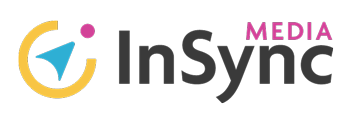Ever tried explaining what you do—only to get blank stares? Or crafted a marketing message you thought was clear, but your audience missed the point? You may be facing the Curse of Knowledge, a silent blocker that plagues experts in every field, especially marketing.
This cognitive bias makes it nearly impossible to remember what it’s like not to know something once you’ve already mastered it. The result? You communicate from your expert lens, but your audience becomes confused or disengages because they lack the same background knowledge. That disconnect can quietly sabotage even your most well-crafted marketing efforts.
What Is the Curse of Knowledge in Marketing?
The Curse of Knowledge happens when we unconsciously assume others understand our expertise. In marketing, it creates unclear, overly complex messaging that alienates potential customers.
When you know your product or service inside and out, it’s easy to skip the basics or default to jargon. But what’s second nature to you might sound like a foreign language to your ideal client. To communicate clearly, we must strip away assumptions and speak to our audience’s level—not our own.
How This Bias Hurts Your Marketing
The Curse of Knowledge confuses people and breaks trust.
If your message feels vague, complicated, or irrelevant, your audience may:
- Click away without understanding what you offer
- Feel overlooked or intimidated
- Miss your value entirely—and choose a competitor instead
Even worse, you may misprice your offer or present your value incorrectly, resulting in lost revenue. Marketing must bridge the gap between what you know and what they need to hear.
Real-World Brands That Beat the Curse
Smart companies simplify. They translate expertise into benefits people can instantly grasp—and it works.
Apple
Once focused on specs and technical jargon, Apple shifted its focus to emotion and experience. “1,000 songs in your pocket” meant far more than any hardware detail ever could. It was simple, human, and relatable.
Coca-Cola
With the launch of New Coke, Coca-Cola ignored emotional loyalty and focused only on flavor. The backlash was swift. Their recovery came from reconnecting with their audience’s true desires: nostalgia, brand identity, and tradition.
These brands learned the hard way: clarity and connection outperform cleverness and complexity.
Are You Too Close to Your Brand?
If your audience seems confused, unengaged, or skeptical, the problem might not be them. It might be how you’re speaking to them.
Signs You’re Caught in the Curse:
- You use internal or industry-specific terms in public messaging
- You assume prospects know the basics
- Your site visitors bounce quickly or don’t convert
- Your offer feels exciting to you, but flat to your audience
When you’re inside your brand every day, it’s easy to lose perspective. That’s why we recommend auditing your message through the eyes of a beginner.
Jargon and Assumptions: The Hidden Offenders
Most business owners are unaware of the extent to which they use insider language. Phrases like “value proposition,” “optimization,” or “omnichannel strategy” can be confusing to those who require simpler explanations.
Key principle: If you want people to understand you, speak their language—not yours.
Even skipping over basic concepts can lose your audience. Whether it’s legal rights, insurance terms, or how your process works, starting too advanced leaves people behind.
Clear, simple explanations increase trust, boost conversions, and keep people engaged longer.
Why Clarity Beats Cleverness
You don’t need to be the wittiest brand in your market. You just need to be the clearest.
Thanks to TikTok and other modern innovations, you have seconds to make your point. Direct language cuts through noise. Clarity creates confidence. Simplicity converts.
Always ask: “Would a smart high schooler understand this?” If not, you’ve got work to do.
Strategies to Break the Curse (and Boost Engagement)
1. Speak Human
Trade buzzwords for plain language. Replace vague benefits with tangible outcomes.
2. Start at the Beginning
Assume your reader knows nothing and build from there. Teach, don’t lecture.
3. Use Real-Life Examples
Concrete, relatable stories (like Slack simplifying onboarding for non-tech users) drive points home.
4. Run a Fresh Eyes Audit
Share your messaging with people outside your industry. Ask:
- What do you think this company does?
- What’s confusing or unclear?
- What would make this more understandable?
5. Prioritize Storytelling and Empathy
Stories make information sticky. Empathy ensures you’re addressing real needs, not just showcasing expertise.
6. Use Customer Feedback Loops
The Continuous Discovery Framework helps identify where messaging loses people. Interviews, surveys, and usability tests shine a light on where you’re too technical or abstract.
Let InSync Media Help You Cut Through the Noise
Your knowledge is your strength… but only if your audience can follow you. At InSync Media, we specialize in transforming expert-level insights into clear, compelling marketing that resonates.
Through tools like Fresh Eyes Audits, Story-First Messaging, and strategic rewrites, we help service-based businesses clarify their voice and connect with their ideal clients.
Want to find out if your messaging is hitting the mark or missing it?
Schedule your free discovery call today, and let’s simplify your message without dumbing it down. Because clarity isn’t just kind; it’s profitable.
